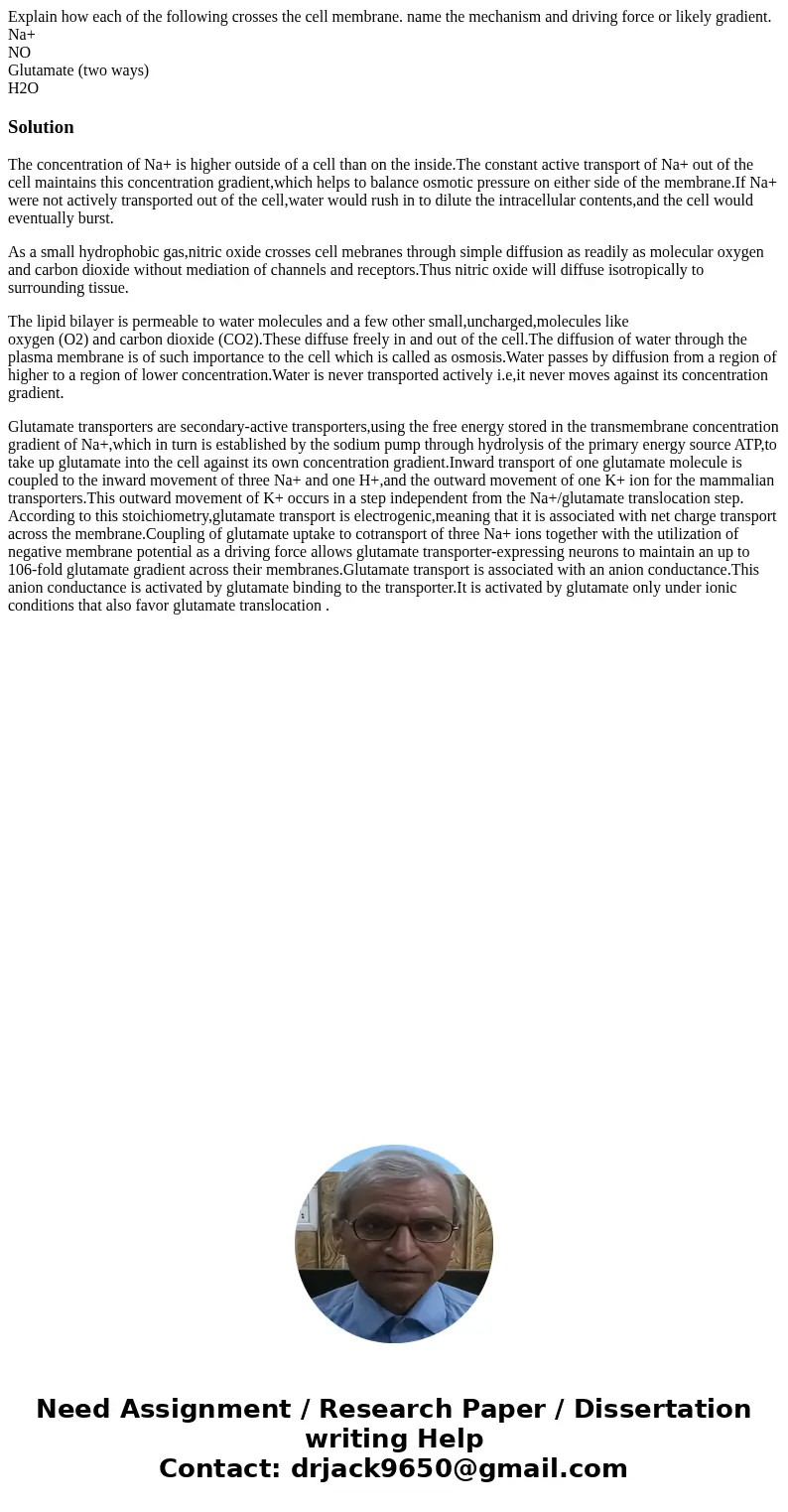Explain how each of the following crosses the cell membrane
Explain how each of the following crosses the cell membrane. name the mechanism and driving force or likely gradient.
Na+
NO
Glutamate (two ways)
H2O
Solution
The concentration of Na+ is higher outside of a cell than on the inside.The constant active transport of Na+ out of the cell maintains this concentration gradient,which helps to balance osmotic pressure on either side of the membrane.If Na+ were not actively transported out of the cell,water would rush in to dilute the intracellular contents,and the cell would eventually burst.
As a small hydrophobic gas,nitric oxide crosses cell mebranes through simple diffusion as readily as molecular oxygen and carbon dioxide without mediation of channels and receptors.Thus nitric oxide will diffuse isotropically to surrounding tissue.
The lipid bilayer is permeable to water molecules and a few other small,uncharged,molecules like
oxygen (O2) and carbon dioxide (CO2).These diffuse freely in and out of the cell.The diffusion of water through the plasma membrane is of such importance to the cell which is called as osmosis.Water passes by diffusion from a region of higher to a region of lower concentration.Water is never transported actively i.e,it never moves against its concentration gradient.
Glutamate transporters are secondary-active transporters,using the free energy stored in the transmembrane concentration gradient of Na+,which in turn is established by the sodium pump through hydrolysis of the primary energy source ATP,to take up glutamate into the cell against its own concentration gradient.Inward transport of one glutamate molecule is coupled to the inward movement of three Na+ and one H+,and the outward movement of one K+ ion for the mammalian transporters.This outward movement of K+ occurs in a step independent from the Na+/glutamate translocation step. According to this stoichiometry,glutamate transport is electrogenic,meaning that it is associated with net charge transport across the membrane.Coupling of glutamate uptake to cotransport of three Na+ ions together with the utilization of negative membrane potential as a driving force allows glutamate transporter-expressing neurons to maintain an up to 106-fold glutamate gradient across their membranes.Glutamate transport is associated with an anion conductance.This anion conductance is activated by glutamate binding to the transporter.It is activated by glutamate only under ionic conditions that also favor glutamate translocation .

 Homework Sourse
Homework Sourse